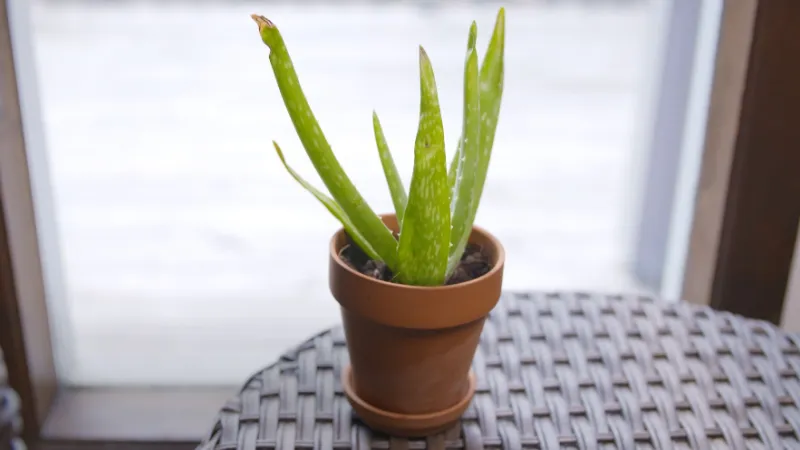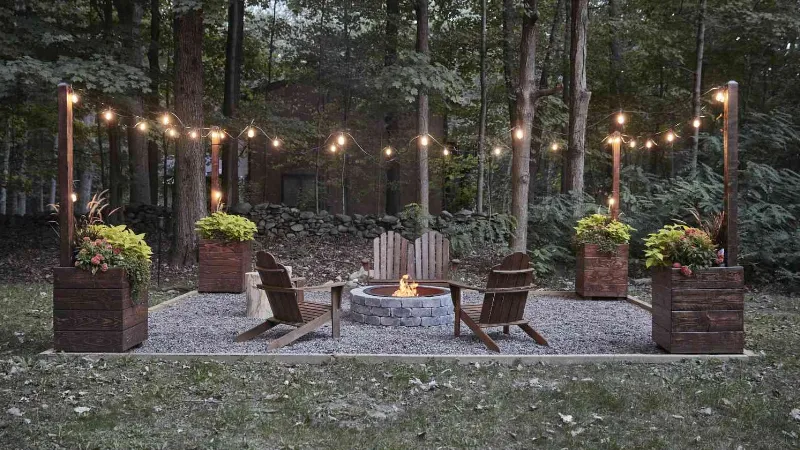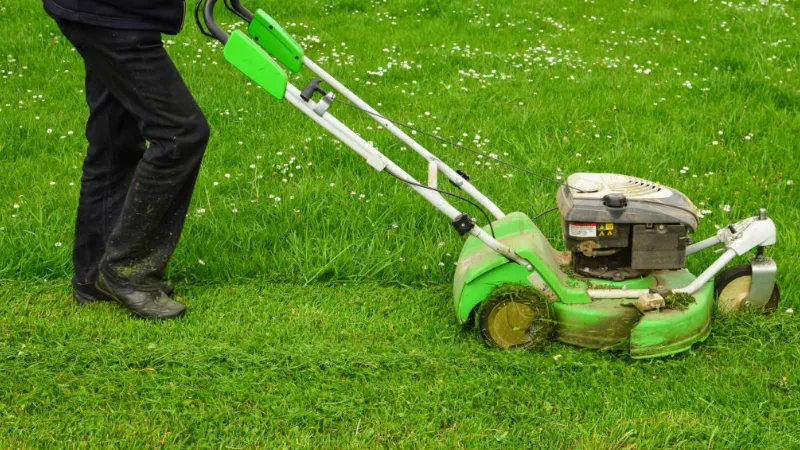How much sun do aloe vera plants need? This a very common question when caring for aloe vera plants. Below will tell you how to make the best use of sunlight.
How Much Sun Do Aloe Vera Plants Need? The Aloe Vera plant needs a good 6-8 hours of sunlight daily to reach the maximum potential of its’ value. The Aloe Vera plant will not appreciate the sun and could suffer damage if you, the gardener, move it from a shady area in your garden or even inside your home to an area with lots of sunlight and warmth.
The plants can withstand droughts and go for extended periods of time with very little water. Your plant won’t need much water other than the occasional spritz. The aloe vera plant can withstand temperatures of 60 to 75 degrees Fahrenheit indoors and 50 to 85 degrees outside.
Please read on for more detailed information.
How Much Sun Do Aloe Vera Plants Need?
To answer the question: “How Much Sun Do Aloe Vera Plants Need? ” Below will explain light requirements thoroughly.
Indoor Light Requirements
If they don’t get enough light, indoor aloe plants may suffer. While artificial lights are a great option, one can ensure that their plants get enough sunlight by positioning the planter within 3 feet of unshaded south- or west-facing window.
However, if you live in a cooler region where fog is common, you might want to think about putting the planters close to windows that face north or east.
It’s important to have the right amount of light. So, if you plan to offer your plant artificial light, you should know what amount of sunlight enters your home.
The amount of light that will promote the growth of your plant can be optimized and provided in this way. So, measure the amount of sunlight that enters your home with a light meter before choosing a location for your aloe plant.
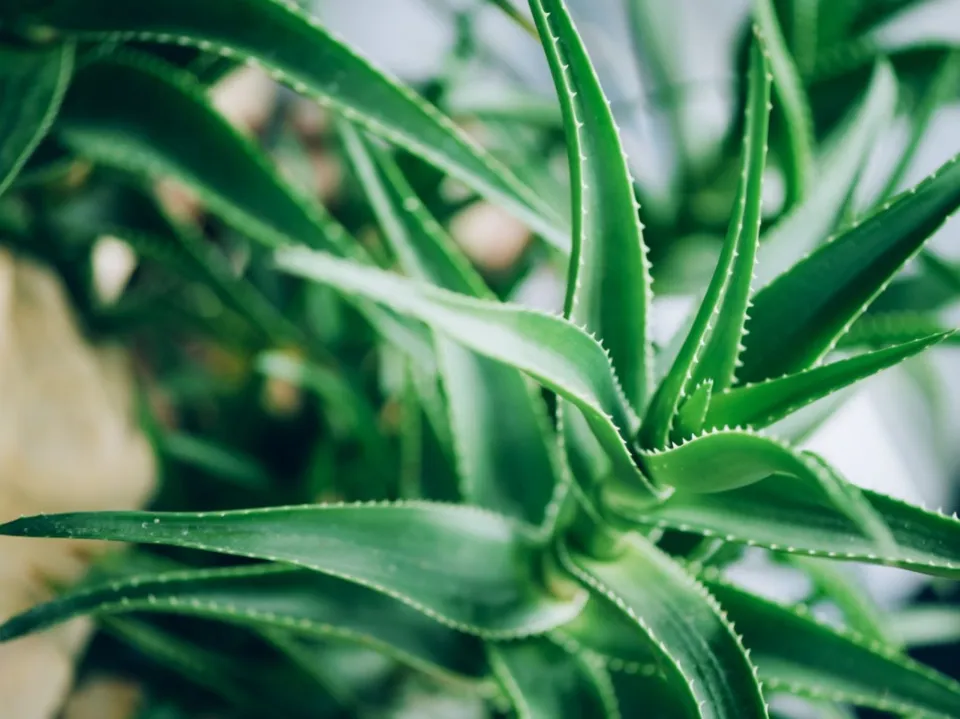
Outdoor Light Requirements
Moving your indoor aloe outside in the late spring and summer will give it access to sunshine and clean air. However, your aloe vera may die if the temperatures are too low. Protect your plant from temperatures of 40 degrees Fahrenheit or lower by doing so.
Provide your Aloe Vera Plant with as much light as you possibly can, mostly during springtime and summer. During the summer, when the temperature is above 70°F (21°C), aloes can be kept outside in direct sunlight. However, bring the Aloe inside if nighttime temps threaten to drop below 60°F (16°C).
Please wait a few days before bringing your aloe plant outside; otherwise, it might get sunburned if it is exposed to bright light right away. Prior to relocating it to a location with more sunlight, make sure it first sits in some shade for about a week.
Aloe vera thrives in full sun, especially in cooler climates where fog or overcast skies are typical. Make sure that your plants receive at least six hours of direct sunlight, but most aloe vera plants can tolerate a little light shade or filtered sun during the midday.
The best outdoor spaces, whether in a pot or the ground, are south or west facing with slightly sandy soil. When moving indoor aloe vera plants to a bright, sunny spot outdoors, sunburn is a concern.
If you’re growing aloe plants outdoors, place them in partial shade. The location you choose should get lots of morning sun. However, during the afternoon, when the lighting is the strongest, be sure to protect the plants.
If you don’t offer your aloe plants enough protection from direct lighting, they might become dried out. The sun may also scorch the leaves. Before planting or leaving the plant outside, gradually acclimate it to outdoor conditions by exposing it to sunlight for longer periods of time each day for one to two weeks. Acclimatizing minimizes stress to the Aloe.
Low Light Considerations
Aloe vera plants depend on sunlight for both light and warmth, which are essential for preserving their health. Lack of blooming and discolored growth will result from ongoing underexposure to light. Additionally, as aloe vera plants stretch toward any nearby source of light, their growth will become leggy and weak, disfiguring the plant. Root rot is another common problem with aloe vera plants grown in low light conditions. Warming the soil with sunlight aids in controlling its moisture content. If your aloe vera plant is growing in less-than-ideal light conditions, be sure to monitor the moisture level in the soil and water only when it feels dry in the top 1 to 2 inches.
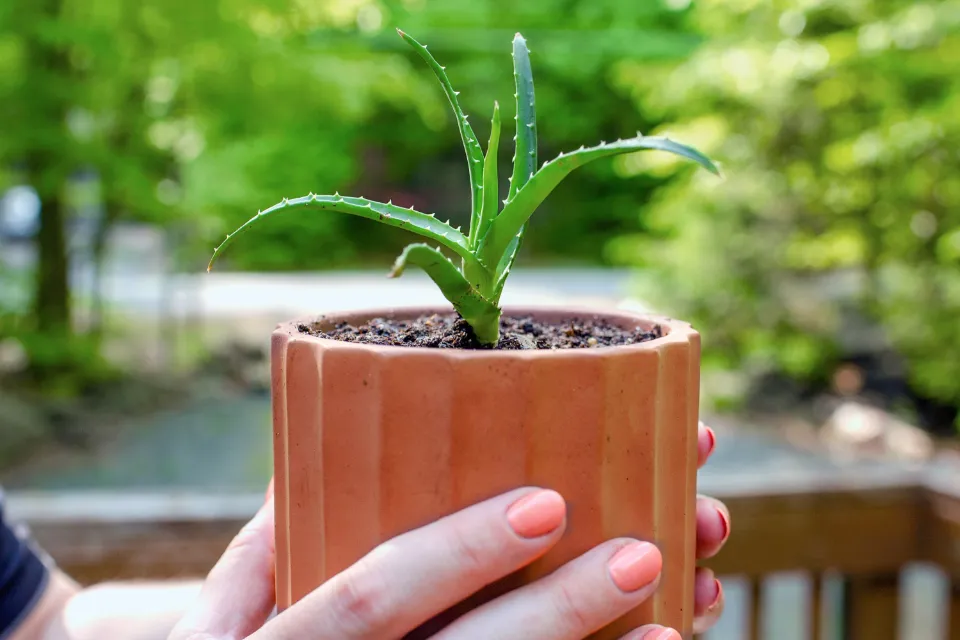
High Light Considerations
Even sun-loving aloe vera plants will suffer if exposed to harsh, direct sunlight for too long. Overexposure to the sun is less of an issue in coastal regions or in cooler microclimates, but it is possible if the plants are grown in a south- or west-facing bed next to a wall because light will reflect off the building. Blanched leaves and midday wilting despite adequate irrigation are symptoms of excessive sun exposure. Aloe vera plants in pots should be relocated to a spot with filtered shade during the midday. Position a shade cloth over them or move the aloes into a bed that receives some light shade if they need some protection from the sun during the hottest part of the day.
Age-Related Light Considerations
Generally speaking, an aloe vera plant can withstand direct sunlight better the older it is. Young plants that have recently been propagated are less able to withstand high light levels than older, more established plants. Keep newly potted puppies or seedlings in a bright, diffuse area of light, such as close to a south, west, or east-facing window with a sheer curtain, or outside under a shade cloth during the day; bring them inside at night. Young plants shouldn’t be exposed to direct midday sun until they are well-established, at which point you can gradually acclimate them over the course of a week.
Signs That Your Aloe Vera is Not Getting Enough Light
Aloe flop can happen if your plant doesn’t receive enough sunlight and the foliage lacks the strength to grow in the fine upright form you anticipate. Instead, leaves will appear limp, flattened, and elongated.
Frequent low light will result in both discolored growth and a lack of blooming. Low-light plants stretch toward light sources, resulting in the plant’s disfigurement and weak growth, and as a result, they grow leggy.
Aloe vera plants are grown under low light and experience root rot. By heating the soil, sunlight manages its moisture content. Root rot is more likely to occur in conditions of cold and moisture. Watch the amount of moisture in the soil and water only when necessary.
Lack of light will weaken your aloe plant and cause the leaves to crease or bend at the base or in the middle. A leggy growth habit and pale leaves are other indications of insufficient light.
Read about Why Your Aloe Plant is Turning Brown?
Signs of Overexposure to Sunlight
The healthiest aloe vera plants are those that are not overly exposed to the sun for an extended period of time. Due to light reflecting off the building, excessive sun exposure occurs along the coast and can also occur if plants are grown next to a south or west-facing wall.
Despite adequate watering, signs of overexposure to sunlight include blanched leaves and midday wilting. At noon, relocate your potted aloe vera plants to a spot where they will get some filtered shade. Aloes grown in gardens will need protection when the sun is at its hottest, so cover them with a shade cloth or move them into a bed that receives some light shade.
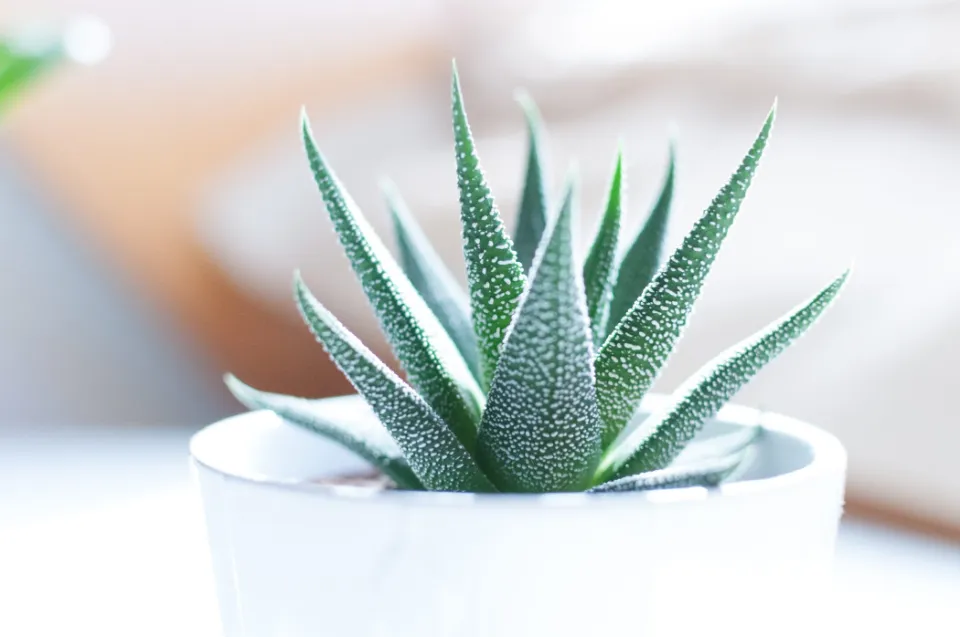
How Low Light Impacts Aloe Vera?
In addition to light, the sun provides warmth to plants, which is essential for improving their general health. If your aloe vera plant is underexposed to light for a long time, you might not be able to see any blooms.
You might even see growth that is discolored. As already mentioned, poor lighting can result in leggy and weak growth.
In addition to these problems, aloe vera plants with insufficient light are vulnerable to root rot. Light helps control soil moisture levels because it is warm.
But with cold and damp soil, the probability of root rot increases. To prevent these problems, it is therefore preferable to check the moisture content of the soil.
Additionally, if your plant is not receiving enough sunlight, you should refrain from watering it frequently. Only water your aloe plant if the soil looks or feels dry, particularly if it is developing in less-than-ideal lighting conditions.
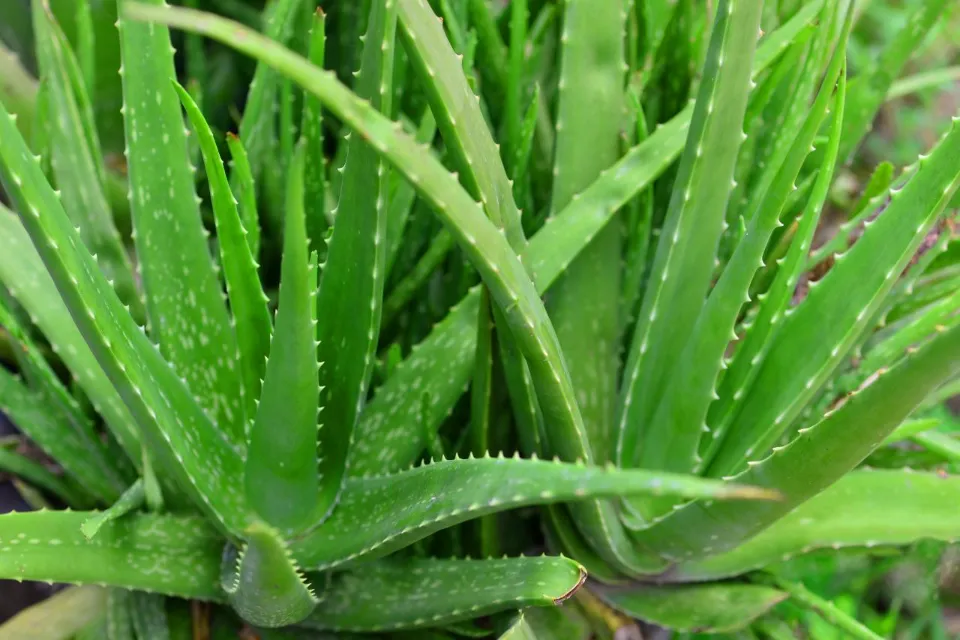
How Excessive Light Impacts Aloe Vera?
Aloe vera loves the sun, but prolonged exposure to intense sunlight can harm the plant. This is usually a concern in coastal regions. In the west or south-facing bed, overexposure is also typical when planters are placed up against a wall or glass. This is because light reflects off the structure, resulting in the plant receiving more light.
Blanched leaves may be an indication that your plant is receiving too much light. Midday wilting is also a common sign of overexposure to light. To prevent this, it is preferable to move your planter to an area that receives dappled sunlight during the midday.
You can protect the plant with shade cloth if you grow aloe in your garden. You can even consider transplanting the plant to a lightly shaded place.
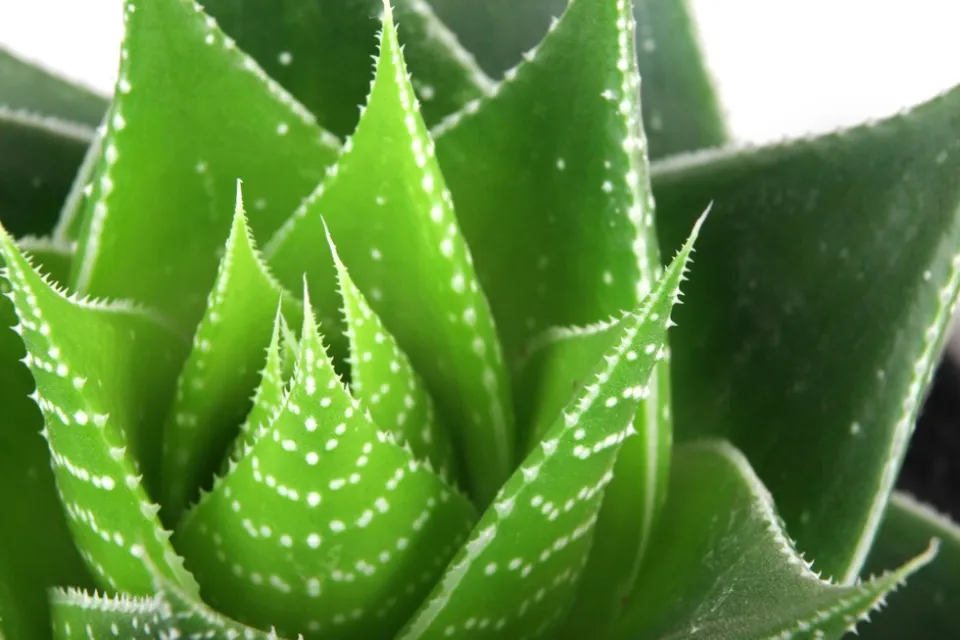
Light Considerations Based on the Age of the Aloe Vera Plant
Typically, older aloe vera plants are more resilient to direct sunlight than newly propagated, younger plants. More immature aloe plants will not tolerate harsh and intense light.
Consider keeping some seedlings or pups that you have recently potted under a bright or diffused light. Alternatively, put them close to a window that faces south, east, or west. Be careful to protect them, though, during the day with a sheer curtain or shade cloth.
The planter can be moved inside at night. Gradually begin exposing them to direct sunlight once they have established themselves.
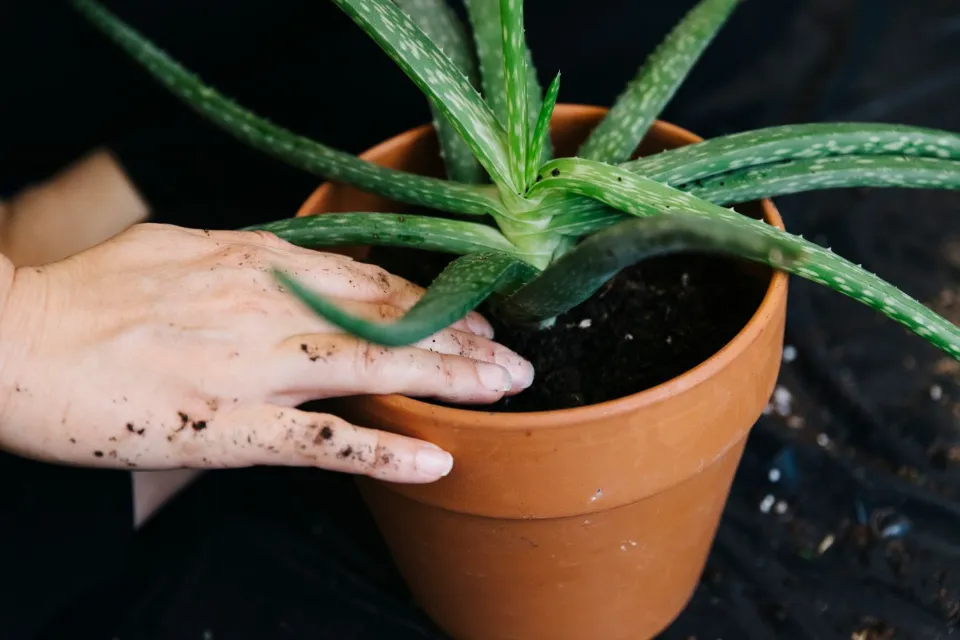
FAQs
How Much Sun Does Aloe Vera Need to Bloom?
By giving your aloe plant enough sunlight, you can increase the likelihood of it blooming. It is best to transfer your plant to your garden as soon as the weather begins to warm. Before you do that, make sure there are no indications that winter is about to return.
The ideal temperatures for your aloe plant are between 21 and 29 °C during the day and 15 °C at night. If the temperature drops below 15°C at night, you might need to bring your plant back inside.
Can Aloe Vera Survive Without Sunlight?
Sunlight not only provides light but also warmth which is vital for maintaining the health of the plant. Aloe Vera loves sunlight but not too much or too little. Aloe Vera will develop discolored growth and fail to bloom if it receives insufficient sunlight. Poor root growth is a result of inadequate sunlight, and the plant eventually dies.
Even with sufficient watering, overexposure to sunlight will cause the leaves to blanch and wilt. In nature, the older, more robust aloe vera plants are more well-established than the younger ones, and they can withstand the sun’s rays better.
In regions like the South-East Arabian Peninsula, Northern Africa, Sudan, and close-by nations and regions like the Canary Islands, Cape Verde, and the Madeira Islands, aloe vera is a plant that is commonly found all over the world.
Can the Aloe Vera Survive in the Shade?
As already mentioned the Aloe Vera plant was originally from the desert where it survived high temperatures through the decades and if been planted in an area where it does not receive adequate sunlight and warmth it will not bloom to its’ potential and the roots will start rotting and the leaves will lose the original color and the plant will look unhealthy and in a poor condition.
The plant will also appear wrinkled and develop brown spots which are indicators of poor health in your plant. Without the necessary sunlight, aloe leaves will also appear limp and droopy; healthy plants grow upwards and outwards towards the sun. similar to how regular flowers do.
Do Aloe Plants Need Direct Sunlight?
Aloe plants do not need to be in direct sunlight. These plants can actually survive on bright, indirect lighting when grown indoors.
Aloe plants should be planted where they will receive some partial shade if you are growing them outdoors. They ought to get a lot of morning sunlight at that location.
The afternoon, however, is when they need to be protected because of the stronger lighting. Your aloe plants may become dry if you don’t give them enough protection from the direct sunlight. Additionally, you run the chance of having the foliage scorched by the sun.
Even if you find the ideal growing space with sufficient lighting for aloe indoors, make sure to rotate your plants as needed.
If not, plants will slant toward the sun, weakening them. Instead, rotate them to make sure that enough light is reaching the entire plant.
Use these suggestions as you continue to develop. Aloe should flourish in many different environments when properly cared for.
Summary: How Much Sun Do Aloe Vera Plants Need?
How Much Sun Do Aloe Vera Plants Need? Aloe plants need 6-8 hours of sunlight a day to reach their maximum potential value. Aloe plants cannot tolerate sunlight and may suffer damage if you, the gardener, move them from a shaded area of your garden or even inside your home to a sunny, warm location.
If you have any questions, please leave a comment. My Prime Home tries to give you the best home improvement information. Don’t forget to share the post. Thank you for reading.
